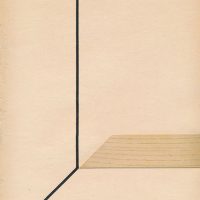His art was a fusion of the best traditions of progressive art and the classical avant-garde. Although he was familiar with the inner circles of the Hungarian neo-avant-garde and participated in its most important forums, such as the Chapel Exhibitions at Balatonboglár and the shows of the Young Artists’ Club, his endeavours were associated more with the heritage of the historical avant-garde, the work of Lajos Kassák and the spirit of the Bosch+Bosch group in Subotica.
As an attempt to provide a comprehensive view of Árpád fenyvesi Tóth’s artistic career starting in the sixties and culminating in the eighties, the exhibition approaches each stage of the oeuvre in terms of the employed media. acb Gallery presents fenyvesi Tóth’s geometric pieces from the early abstract experiments through the meditative Tao Te Ching series, which structurally analyses spatial relations in line meshes of astonishing complexity.
The scale of the series of 90 pieces illustrates fenyvesi Tóth’s essentially procedural work method, which characterized his work regardless of medium. The space of acb Attachment aims to provide an overview of fenyvesi Tóth’s visual poetry, which he was engaged in from the late sixties, building on his early poetic ambitions, primarily based on the tradition of Kassák’s visual poetry. acb NA presents Árpád fenyvesi Tóth’s comic strips made from 1972 as a result of his newfound friendship with Yugoslavian artist Slavko Matković.
On the occasion of the exhibition, a book with the same title has been published by acb. The in-depth volume edited by co-author Emese Kürti seeks to interpret comprehensively the work of Árpád fenyvesi Tóth with texts by Flóra Barkóczi, Miško Šuvaković and Bálint Szombathy.

